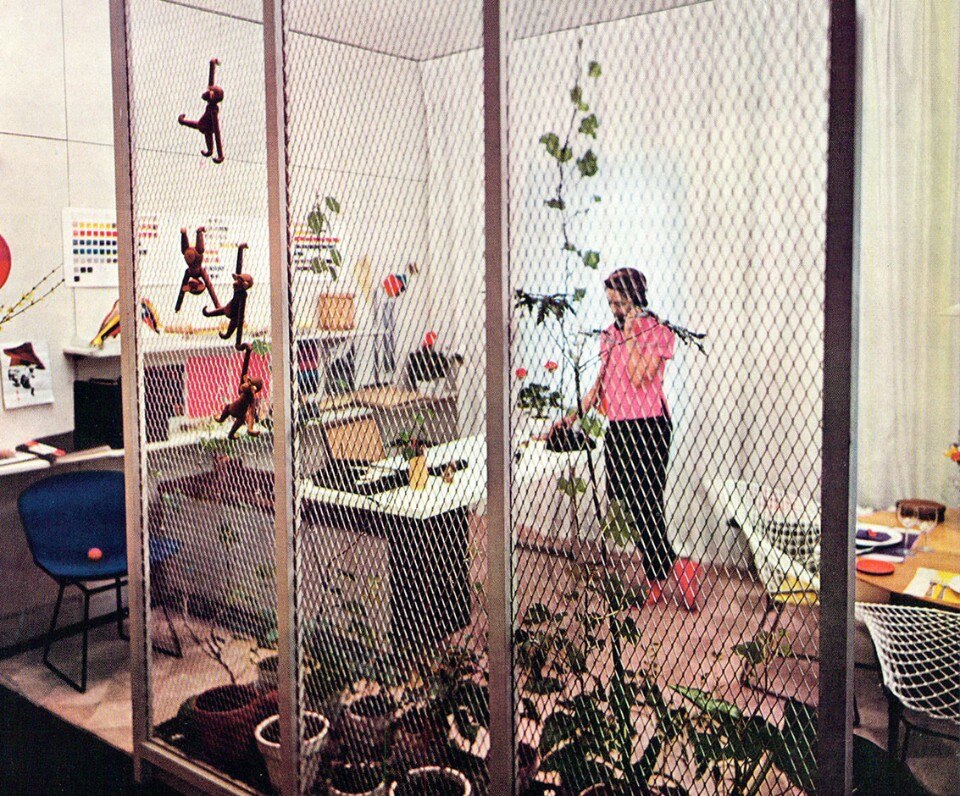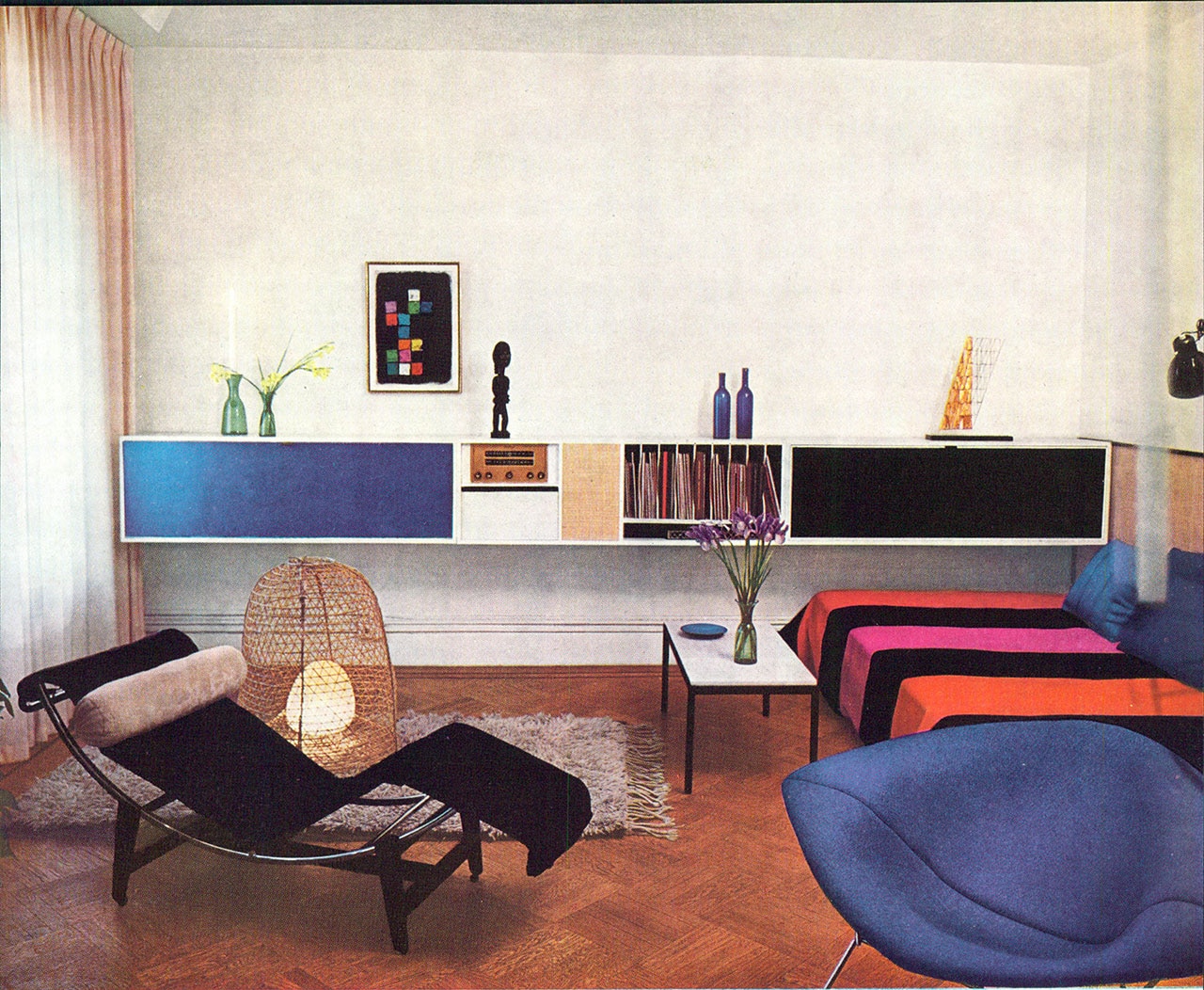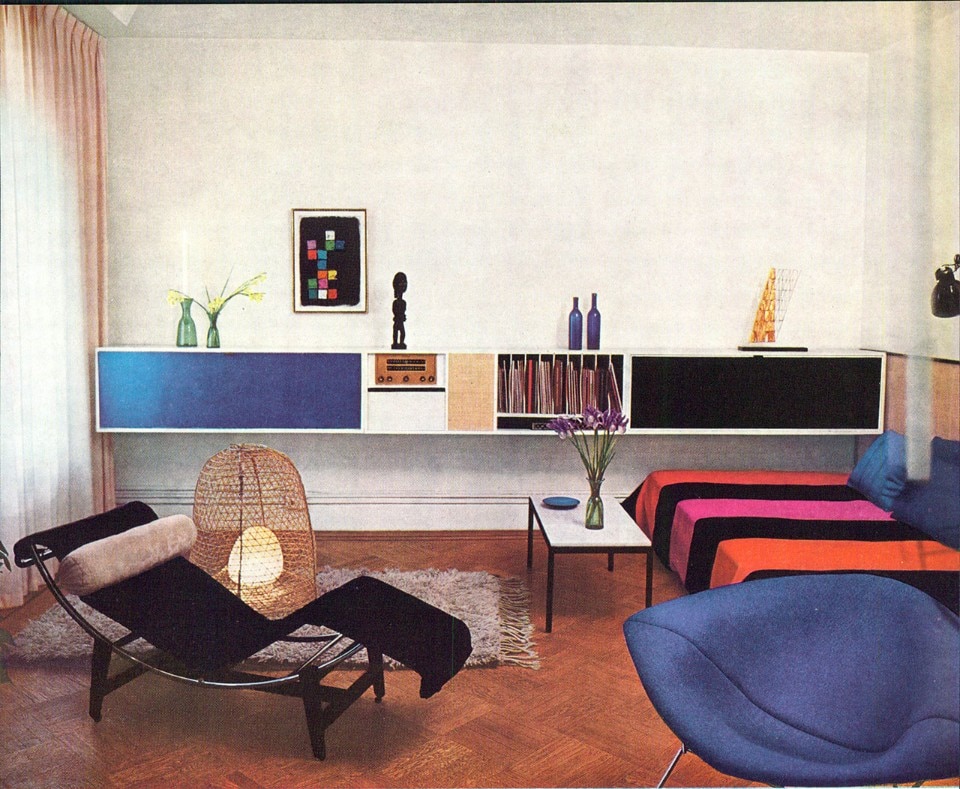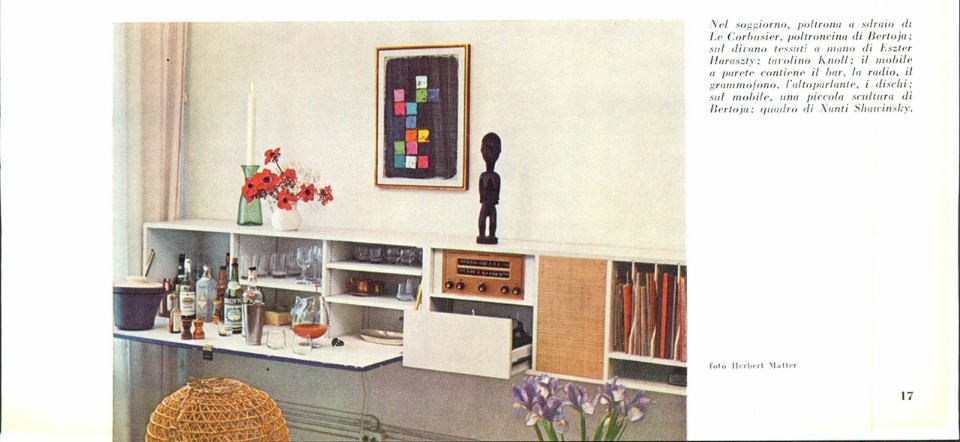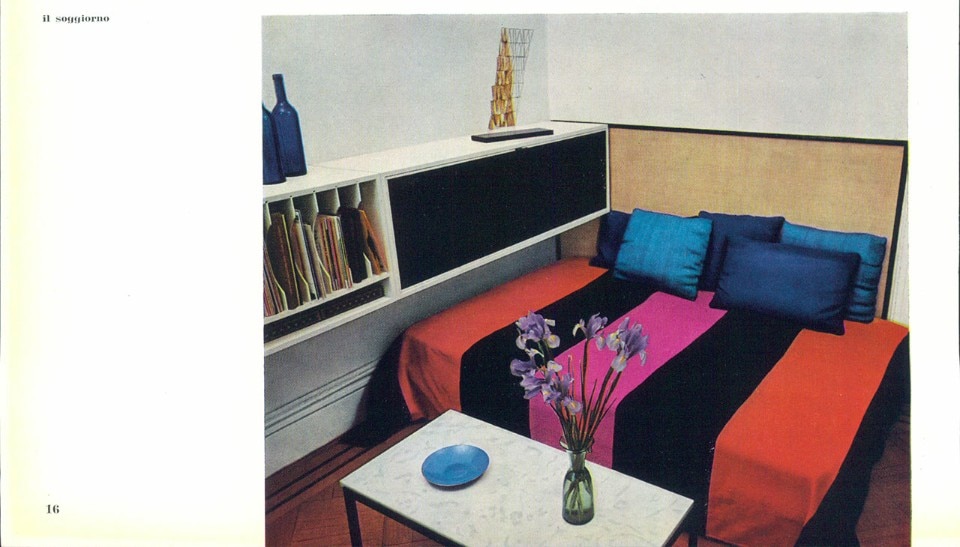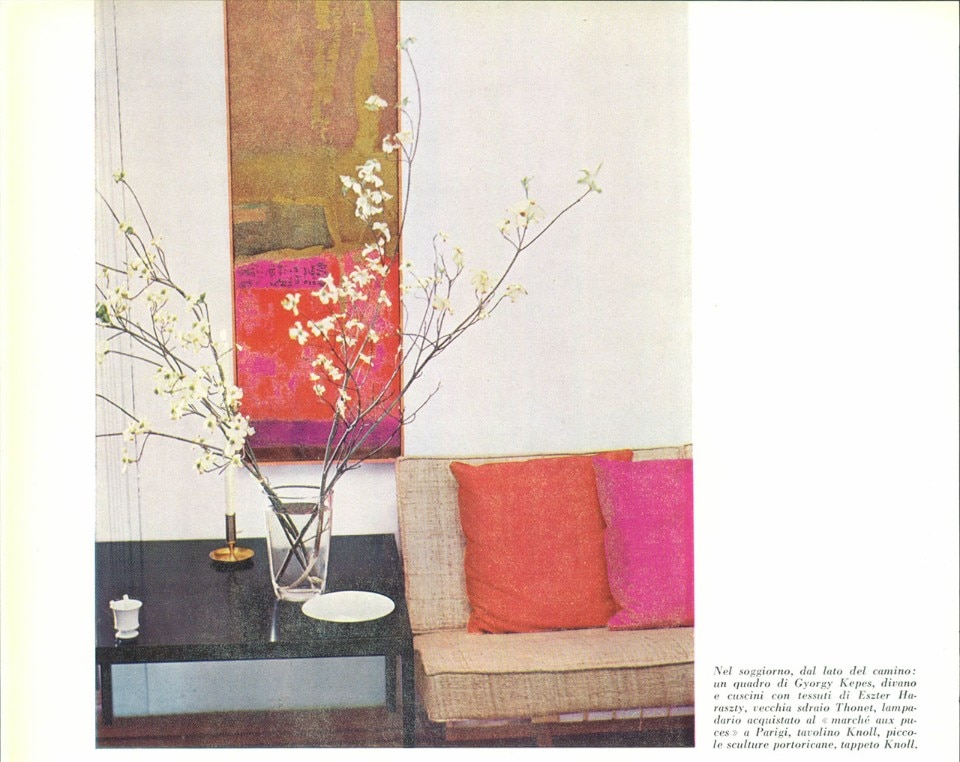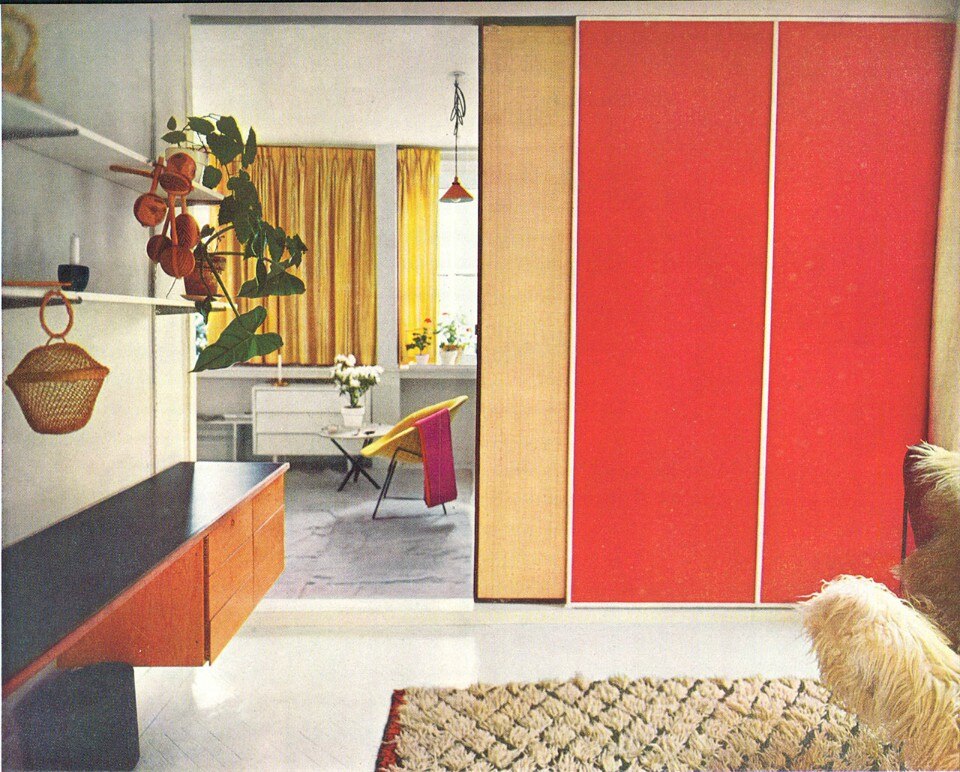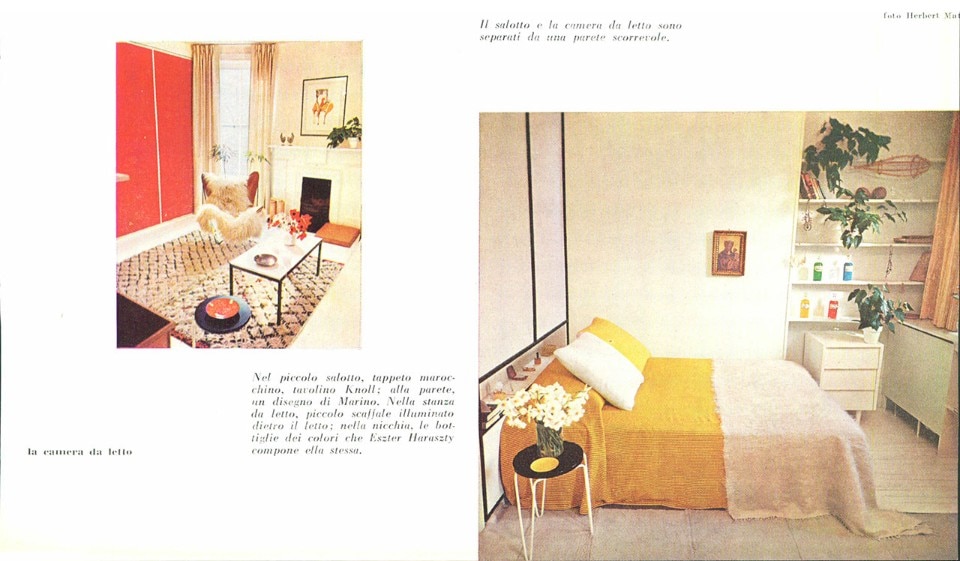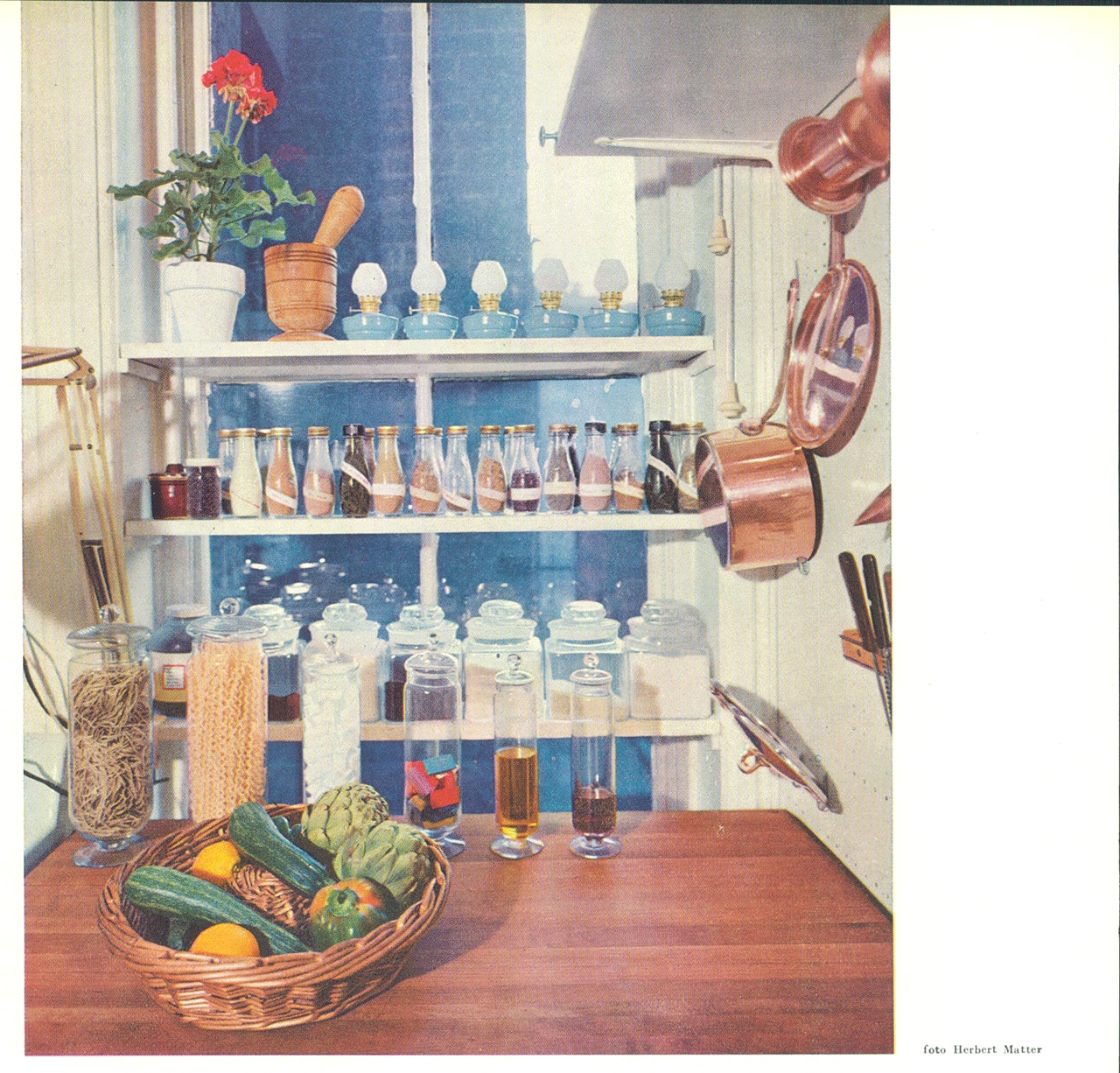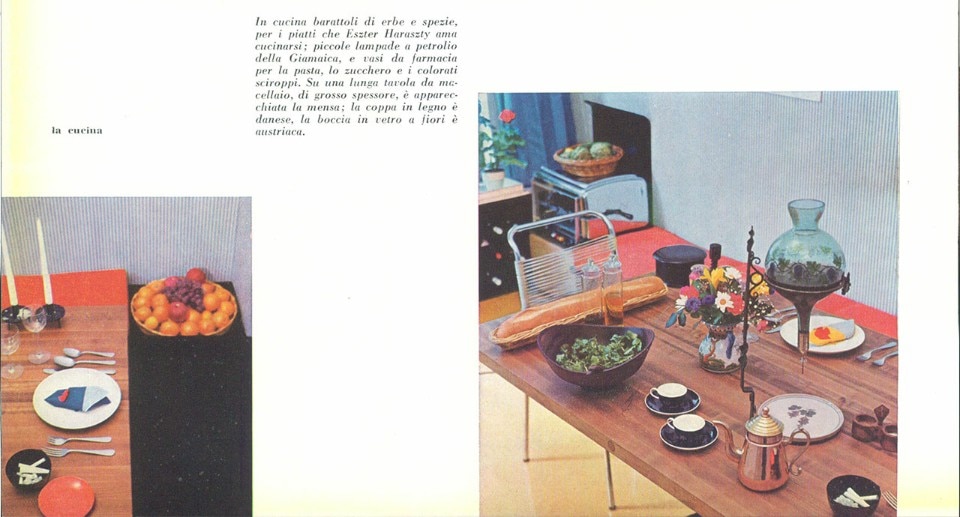“Eszter Haraszty likes to make her own colors, just as she likes to cook for herself and to collect bizarre European objects and travel memories.” With these words, in December 1956, the Domus article “The house of an artist in New York” presented the apartment of Eszter Haraszty, a young Hungarian artist and designer.
This apartment in the heart of the city is a triumph of bright textiles, elegant armchairs, travel memories and spice jars. It is a house that is also a studio, and it tells the story of the owner’s passion – colour – and her relationship with Knoll Associates, the furniture company she works for and which collaborates with the world’s greatest designers, from Finnish Eero Saarinen to Hungarian Marcel Breuer. And it was her friend and fellow countryman Breuer who introduced the young Haraszty, who had arrived in New York in 1946, to Hans Knoll, who hired her immediately upon seeing her portfolio of prints and textiles. In 1949, he entrusted her with the artistic direction of the company’s textiles department. Haraszty introduced the use of new materials, such as nylon, and distinguished herself by the use of bold colours, including pink and orange, which later became the company’s signature. “Knoll owes her its beautiful textiles, splendid in their colours”: this is how Domus presented the young colourist to the readers in 1956. (Domus 325, December 1956)
Knoll owes her its beautiful textiles, splendid in their colours
At the time of the publication of his home-studio on Domus, Eszter Haraszty was in charge of the furniture department of Michael Saphier’s American studio, but the symbols of the relationship with Knoll and its collaborators are scattered in her private rooms, as are the works of art of European friends and artists who emigrated in search of the freedom of expression that characterized America in those years. The textiles that cover the sofa and the cushions are creations of Eszter. In the living room there is an old Thonet chair in curved beech wood and many other modern pieces: Le Corbusier’s leather chaise longue and a bright blue Diamond Chair designed by Harry Bertoia for Knoll in 1952. Haraszty also displays a small metal sculpture by Italian-born designer Bertoia on the living room furniture – along with a gramophone, some records, a bottle liquor and Peruvian sculptures. On the white walls, the bright colours of two paintings stand out: a coloured palette on a black background by Xanti Schawinsky, a Swiss artist and alumnus of the Bauhaus in Dessau and graphic designer for Olivetti, and the pink and orange of a work by György Kepes, Hungarian emigrant artist who took part in the New Bauhaus movement in Chicago.
On the furniture, red, blue and purple cut flowers in colored glass vases, and travel memories; at the entrance, a white metal Berber chair and a Belgian candle holder. The large candle holder in the living room, which she purchased at the Marché aux puces in Paris, rests on a cabinet designed by Knoll.
A red sliding wall separates the living room from the bedroom, where the designer exhibits many bottles of the colors she personally makes.
Even the kitchen tells the adventurous and creative life of the owner:
“...jars of herbs and spices, for the dishes that Eszter Haraszty loves to cook; small oil lamps from Jamaica and pharmacy jars for pasta, sugar and colourful syrups”. (Domus 325, December 1956). She puts her food on a long, thick butcher’s table: the salad is in a Danish wooden cup, the flowers in an Austrian glass bowl.
...jars of herbs and spices, for the dishes that Eszter Haraszty loves to cook; small oil lamps from Jamaica and pharmacy jars for pasta, sugar and colourful syrups
The photographs of the colourful rooms published on Domus were taken, not by chance, by Herbert Matter, another great figure linked to Knoll: he’s the photographer and graphic designer responsible for the company’s graphic identity since 1944. In the opening image of the article, behind the perforated metal panel with wooden monkeys by Danish designer Kay Bojesen, you can see the fleeting figure of Eszter Haraszty, who’s wearing shocking pink t-shirt and shoes, of course.
Top image: Eszter Haraszty in her studio, image taken from “The house of an artist in New York”, published on Domus 325 of 1956, photographs by Herber Matter.


